Growing Degree Days: AI's Role in Pest Control Timing
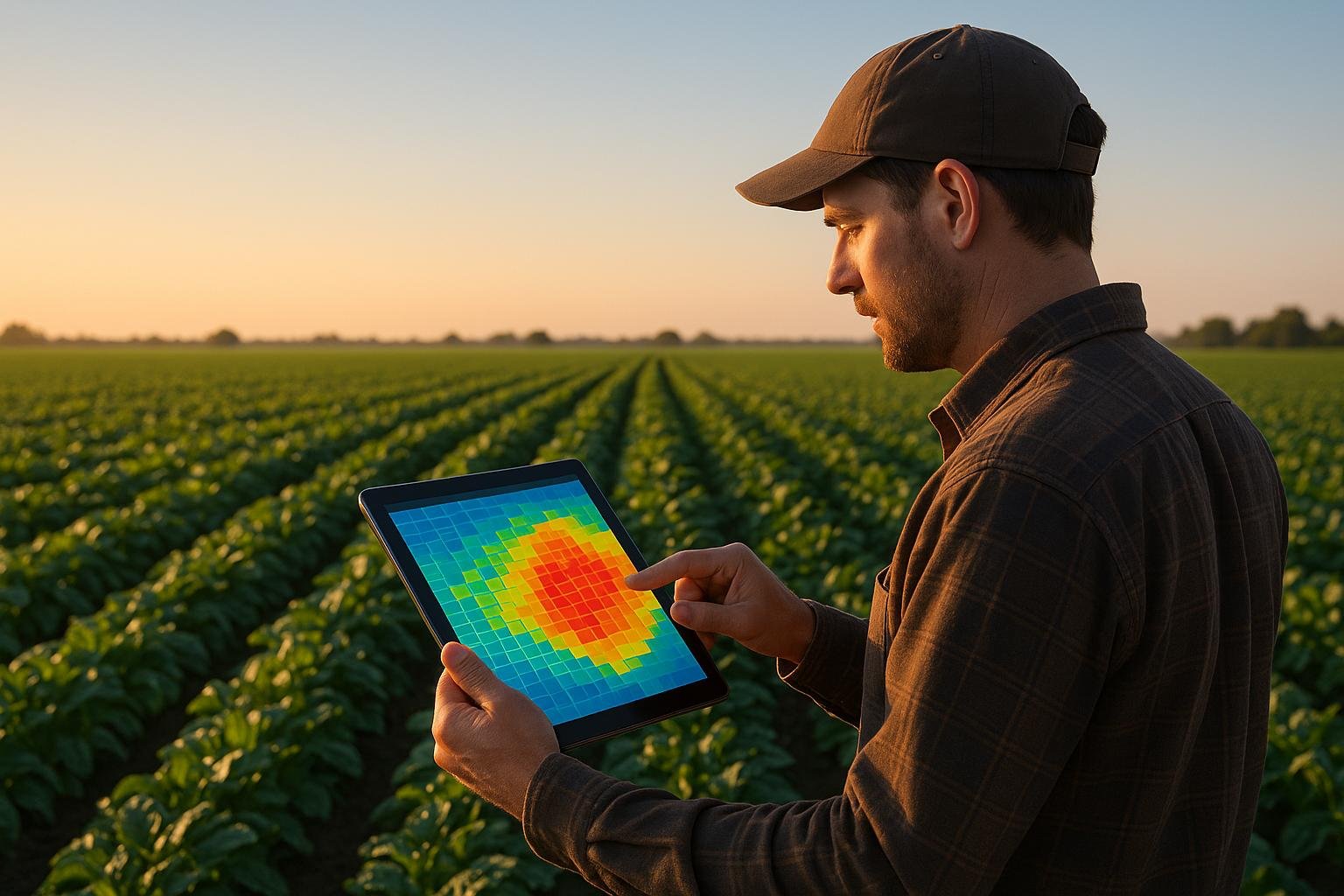
Pests destroy up to 40% of global crops annually, costing $290 billion. Traditional pest control methods, based on fixed schedules, often fail to address pest life cycles effectively. Enter Growing Degree Days (GDD) and Artificial Intelligence (AI) - a smarter, data-driven way to time pest control.
Key Takeaways:
- GDD measures heat accumulation to predict plant and pest development stages more accurately than calendar-based methods.
- AI-powered tools analyze weather, pest life cycles, and crop data to forecast pest activity.
- Farmers can reduce pesticide use by 50–90% and increase yields by up to 20% with precise, timely interventions.
- Examples include tools like Semios, FarmQA, and Plantix, which integrate sensors, machine learning, and smartphone apps for pest monitoring.
Why It Matters:
AI and GDD allow farmers to target pests when they’re most vulnerable, cutting costs, protecting crops, and reducing chemical use. This approach is already transforming agriculture, from cotton fields in India to almond orchards in California.
Want to know how to implement this on your farm? Read on for insights and practical tips.
Drone Series 2024: Next-Generation Pest Management Tools

AI-Powered GDD Models for Pest Forecasting
Building on the earlier discussion of AI's role in optimizing pest control timing, modern tools have transformed traditional Growing Degree Day (GDD) calculations into advanced forecasting systems. These systems analyze environmental data to deliver precise, actionable insights, helping farmers tackle pest issues at just the right moment.
How AI Analyzes GDD Data
AI algorithms take temperature data and biofix events - key markers like the first sustained adult catch in pheromone traps - and use them to predict pest activity with impressive accuracy. Unlike manual GDD methods that rely on basic temperature averages, AI integrates a variety of environmental factors and adapts to local conditions in real time [5]. These systems examine historical weather trends, current temperature patterns, and specific pest development thresholds to forecast when pests will reach vulnerable stages.
Take the example of managing codling moths in apple and pear orchards. Growers can use AI-driven systems to track biofix events and calculate GDD accumulation. These models predict critical stages like egg hatch at 220–250 GDD and peak hatch at 500–600 GDD after biofix. By pinpointing these stages, farmers can apply insecticides precisely when the newly hatched larvae are most susceptible [5].
AI doesn’t stop there - it incorporates real-time sensor data from weather stations, pheromone traps, and IoT devices to refine predictions on the fly. This dynamic approach ensures that pest control measures are both timely and effective.
Machine Learning and Remote Sensing in Pest Monitoring
AI takes pest monitoring a step further by combining GDD analysis with remote sensing technology. Satellites now track GDD accumulation across large agricultural regions, providing high-resolution temperature maps and real-time data that feed directly into machine learning models [5]. This integration creates detailed environmental profiles, making pest forecasting more accurate than ever.
Deep learning techniques, such as Convolutional Neural Networks (CNNs), analyze multiple data streams simultaneously - temperature, humidity, wind conditions, and historical pest outbreak data. For instance, CSIRO's "Pest Forecast" platform uses machine learning to predict pest activity based on weather and historical insights [1].
Some machine learning models have achieved exceptional results, like 99.78% accuracy in sound-based detection of 800 pest species [1]. Another project using an upgraded YOLOv5 model reached 96% accuracy in identifying pests like leaf miners, fruit flies, aphids, and thrips in greenhouse environments [1].
Practical applications of these technologies are already making waves. The University of Georgia’s "PestID" app identifies insect pests through smartphone camera images [1], while Penn State’s "Plant Village" app helps users detect pests and plant diseases from uploaded photos [1]. These tools not only improve pest identification but also adapt continuously by learning from new data, allowing them to stay effective in changing conditions.
Benefits of AI-Driven Pest Control Timing
Using precise Growing Degree Day (GDD) calculations, AI doesn’t just fine-tune pest control timing - it transforms agricultural practices. By integrating AI-driven GDD models into pest management, farmers can achieve better results with fewer resources. These systems help cut down on chemical use, improve crop health, and reduce harm to the environment.
Reducing Pesticide Usage
AI-powered GDD models allow farmers to apply pesticides at the exact moment pests are most vulnerable. This predictive ability helps stop outbreaks before they even start [4].
Take Blue River Technology as an example. Their smart sprayer uses image-based pattern recognition to tell crops apart from weeds, spraying only where it’s needed. This approach slashes herbicide use by up to 90% [3].
"AI determines the minimal effective pesticide dose, cutting costs and environmental impact." – Delvens.com [3]
This precision matters because traditional spraying methods waste a lot of chemicals - only 20–30% of pesticides actually reach the crops, while the rest is lost to runoff, evaporation, and drift [2]. AI systems pinpoint pest hotspots, allowing for targeted spraying that significantly reduces overall chemical use. For example, a platform combining daily trap counts, weather data, and historical pest trends has achieved over 80% accuracy in predicting infestation peaks [2]. Meanwhile, research from 430 rice fields in China revealed that even a slight delay in pest control - just 15–20% - led to more frequent pesticide applications [2]. AI eliminates this guesswork by providing precise timing, cutting chemical use while boosting crop performance.
Improving Crop Health and Yield
Timing is everything when it comes to pest control. By targeting pests during their most vulnerable stages, crops suffer less damage, leading to healthier plants and higher yields.
For instance, Semios, a precision farming platform partnered with Google, helped almond growers reduce moth populations by 1.5 billion insects, which resulted in higher yields [7]. Targeted pest management like this ensures crops are protected during their most critical growth phases.
Farmers using AI-driven strategies have reported returns on investment (ROIs) of 150–300% within the first year. Plus, continuous monitoring reduces the need for constant manual oversight [7][8].
"Leveraging AI-powered tools and ensuring robust data management practices can position businesses to capitalize on AI's benefits while providing exceptional customer service and driving growth and profitability." – Robert Coop, Senior Director, Artificial Intelligence Strategy, WorkWave [9]
John Deere’s AI-integrated precision farming solutions offer another example. Using sensors on autonomous tractors and harvesters, these systems monitor soil conditions and crop health. This data helps farmers make smarter decisions about irrigation, fertilization, and pesticide use, cutting waste while boosting yields. By improving pest control timing, farmers can enjoy both economic gains and environmental benefits, setting the stage for more sustainable practices.
Lowering Impact on the Environment
AI-driven pest control doesn’t just benefit crops - it also helps protect the environment. By reducing chemical use, these systems minimize runoff and promote cleaner, more sustainable farming.
For example, The Climate Corporation’s Climate FieldView platform combines weather data, field conditions, and soil moisture levels to provide precise irrigation recommendations. Its machine learning models predict water needs based on real-time conditions, cutting water waste and easing environmental strain.
California vineyards are proof of how this approach works. By adopting AI systems, they’ve seen a 25% increase in yield while using 20% less water - showing that productivity and environmental care can go hand in hand.
Apps like Plantix, developed by AgriTech startup PEAT, also highlight the environmental benefits of AI. Using image recognition, Plantix diagnoses plant diseases from smartphone photos and offers specific treatment recommendations. This prevents overuse of chemicals while addressing the problem effectively.
AI systems can even analyze factors like soil pH, temperature, and rainfall to create optimal growing conditions. These insights naturally reduce pest pressure, preserving soil health and maintaining ecosystem balance - all while keeping farms productive in the long run.
sbb-itb-4d6a8dd
🚀 Ready to Reinvent Your Garden?
Join thousands of homeowners who have transformed their gardens using our AI design tool. Upload one photo to explore endless possibilities.
Get your AI garden designs →Research and Case Studies Supporting AI and GDD Integration
There’s a growing body of research and real-world evidence backing the integration of artificial intelligence (AI) with Growing Degree Day (GDD) models. Studies from different parts of the world reveal that combining AI with GDD data and other environmental factors can make pest management more precise, cost-efficient, and eco-conscious. These findings are already influencing practical applications in agriculture.
Studies Highlighting AI-GDD Success
Research shows that AI-powered tools excel at analyzing complex datasets, including pest behavior, weather conditions, and crop health, to determine the best timing for interventions [2]. For instance, a study in China reviewed data from 430 rice fields and discovered that even a 15–20% delay in pest control actions led to a significant increase in pesticide usage [2].
Machine learning has also been employed to forecast pest activity based on weather data. One commercial AI platform, which combines daily pest trap counts with local weather patterns and historical infestation trends, achieved over 80% accuracy in predicting peak pest outbreaks [2]. Advanced AI systems go even further by integrating real-time weather updates, pest life cycles, crop growth stages, and historical outbreak data to fine-tune intervention timing [2].
In another example, Zhou et al. utilized YOLOv4 and Faster R-CNN models to identify two-spotted spider mites and their predators on strawberries using smartphone images. These models achieved an impressive 93% detection accuracy [1].
Examples from Agriculture
Building on these research insights, practical applications in agriculture have shown measurable results across various crops like cotton, almonds, and more.
Cotton Management in Karnataka, India
The Wadhwani Institute of Artificial Intelligence (WIAI) introduced the "cottonace" app, which uses pheromone trap images to guide farmers on pesticide application for Pink Bollworm management. During a pilot study (March–August 2020) involving 100 farmers in Ranebennur, Karnataka, those following the app's advice saw a 16% increase in yield, 7% higher prices due to better fiber quality, and a 20% boost in gross income [10][11].
Cotton Management in Maharashtra, India
Encouraged by these results, WIAI partnered with Welspun farmers in Wardha during the 2020 monsoon season (June–October). Farmers using the app achieved a 33% higher yield - 4.7 quintals per acre compared to 3.1 quintals per acre - with 25% of the yield increase attributed to the app [10][11]. These advancements are critical in a context where pests can reduce cotton yields by 30–50%, with cotton farming accounting for nearly half of India’s insecticide use and 40% of total farming costs [10].
The agri-startup Fasal also demonstrated the environmental benefits of AI-GDD integration, achieving a 42% reduction in pesticide use while maintaining effective pest control [10].
Almond Production in California
In California, almond growers have also benefited from AI-driven tools. Through Semios, a precision farming platform partnered with Google, farmers reduced moth populations by 1.5 billion insects, which directly contributed to improved yields [7].
Statewide Initiative in Maharashtra
On a larger scale, Maharashtra has adopted AI for pest control through initiatives like the CROPSAP program and the MAHAVISTAAR AI app. These programs have shown significant results in cotton-growing regions, prompting the state to formalize its agricultural strategies with the MahaAgri-AI Policy (2025–2029), incorporating AI into broader agricultural decision-making [12].
"Artificial intelligence coupled to remote sensing, GIS, and/or farm sensors can benefit the farmers by cutting costs, increasing yield, and enabling cleaner production. Lower environmental pollution and less risk to farmers and consumers are co-benefits of the AI-IPM package." – Utkarsh Ghate and Hema Kulkarni [10][11]
These examples underline how AI, when combined with GDD models, is reshaping pest management by improving yields and reducing environmental harm.
How to Implement AI-Powered GDD Tools
Getting started with AI-powered GDD tools requires careful planning, from collecting accurate temperature data to setting up models and creating pest management strategies tailored to your needs.
Data Collection and Model Setup
The success of any AI-powered GDD system hinges on reliable temperature data. Field-specific temperature readings are essential because relying on regional weather station data from the Internet can lead to errors in predictions - sometimes by as much as 7–10% [14]. These inaccuracies can disrupt your pest management efforts, so investing in an infield weather station is a smart move. Pair it with data visualization software to automate GDD tracking and ensure precision [14].
Once your weather data is in place, the next step is identifying biofix points for the pests you’re targeting. These biofix points, such as the first adult insect caught in pheromone traps, are determined through field observations [5].
It’s also crucial to pinpoint the pests and crops relevant to your operation. Research the GDD requirements for each pest-crop combination, including base temperatures and the GDD accumulations tied to different pest life stages [5][6]. This knowledge forms the backbone of your pest management plan.
With accurate data and biofix points set, you’re ready to use AI platforms to predict and manage pest activity more effectively.
Using AI Platforms for Pest Management
AI platforms simplify GDD tracking and pest forecasting. For instance, FarmQA enables users to set up virtual weather stations, assign planting dates to fields, and define GDD metrics for calculating daily accumulations. The platform uses base and maximum temperature settings to track GDD data, which is then displayed in the field information sidebar [13].
Another example is Washington State’s AgWeatherNet, which combines AI with tiered weather station systems. Growers can install tier-2 weather stations to complement the existing tier-1 network. This setup allows for hyper-local predictions, helping farmers anticipate mold outbreaks, pest activity, and frost events specific to their fields [14].
For smaller-scale applications, tools like AIGardenPlanner provide location-based climate analysis and tailored growing guides to optimize pest control timing.
Mobile apps, such as the ZENTRA Cloud field app, allow for real-time data verification, ensuring that your decisions are always based on up-to-date information [14].
By leveraging these tools, you can create pest management plans that are uniquely suited to your field’s conditions.
Customizing Pest Control Plans
No two farms or gardens are the same, which is why tailoring your pest control strategies is critical. Develop pest-specific action plans based on key GDD milestones [6]. These plans should take into account local weather patterns, crop types, and preferred treatment methods.
Keep detailed records of pest activity, treatment schedules, GDD accumulations, and the results of each intervention [5][6]. This historical data not only enhances the accuracy of your AI models over time but also helps you fine-tune your approach for future seasons.
To ensure consistent results, train your team on the basics of GDD and integrated pest management. Everyone involved should understand how the system works and their role in maintaining accurate data [6].
For even better outcomes, consider combining GDD data with other precision farming tools. Adding soil moisture sensors, crop growth monitors, or satellite imagery can provide extra context, enabling your AI system to make more informed decisions [5].
Start with reliable data, choose the right AI tools, and refine your strategies as you go. As your system learns from past seasons, its accuracy and effectiveness will improve, helping you stay ahead of pest challenges. Regular updates to your records will ensure your pest management system keeps evolving and delivering better results over time.
AI and GDD for Smarter Pest Management
Building on the earlier discussion of Growing Degree Days (GDD) and AI, combining these tools creates a more precise and efficient approach to pest control. Instead of relying on blanket pesticide applications, this method uses data-driven insights to deliver timely and targeted interventions.
AI-enhanced GDD models shine in predicting pest emergence by analyzing historical weather patterns, current temperature data, and pest biology [5]. This allows growers to time their actions with pinpoint accuracy, often reducing the need for multiple treatments while improving overall pest control.
The environmental advantages are hard to ignore. Traditional methods involve spraying chemicals uniformly across fields, regardless of actual pest activity. AI-powered systems, however, can cut pesticide use by an astonishing 50–90% compared to conventional methods [18]. This reduction helps protect water and soil quality, minimizes harm to beneficial insects, and promotes biodiversity within agricultural ecosystems.
| Benefit | AI-Powered Systems | Traditional Methods | Impact |
|---|---|---|---|
| Chemical Usage | 50–90% reduction | Baseline application | Lower costs and less environmental contamination |
| Crop Yield | Up to 20% increase | Standard yields | Improved productivity through precise treatments |
| Environmental Impact | 70% less runoff | High contamination risk | Healthier ecosystems and easier regulatory compliance |
These technical improvements lead to notable economic benefits. Precision pest management can increase crop yields by as much as 20% while cutting input costs significantly [18]. Given that pests are responsible for up to 40% of global crop losses annually - causing over $70 billion in economic damages [17] - the value of precise timing becomes crystal clear.
Real-world examples highlight these benefits. In crops like apples, pears, and potatoes, AI-enhanced GDD models have been used to target pests at their most vulnerable stages. This approach reduces the need for excessive pesticide spraying while improving pest control outcomes [5] [15]. These successes demonstrate the broad applicability of AI across different farming systems.
"The problem is that the timing of the pesticide application is based on the studies from the 1970s of another state. Here in Pennsylvania, we have many different microclimates. Each farmer may need to apply pesticides at a different time."
- Tyler Seutter, Master's Student at Penn State [16].
AI-powered GDD models solve this challenge by adapting to local conditions and considering multiple environmental factors. Platforms like FarmSense use real-time sensors to monitor environmental data, enabling AI to recommend pest control strategies tailored to specific needs [7].
Even when errors occur - such as a 7–10% deviation - real-time sensor data can help mitigate these issues [14]. As AI continues to advance, it incorporates tools like satellite imagery, drone data, and ground sensors, creating a holistic approach to pest management. This evolution turns pest control into a proactive, precision-based process that benefits not just farmers, but also consumers and the environment.
FAQs
How does AI use Growing Degree Days to improve pest control timing?
AI-driven Growing Degree Day models are transforming pest control by predicting pest life cycles with precision using temperature data. This means pest control measures can be timed perfectly to target pests when they’re most vulnerable, boosting efficiency and cutting down on unnecessary pesticide use.
Traditional methods, like fixed schedules or visual inspections, often fall short in catching problems early. In contrast, these AI models use real-time data to enable proactive and targeted interventions. The result? Infestations are stopped before they become major issues, leading to healthier crops and more sustainable pest management overall.
How does using AI and growing degree days (GDD) benefit the environment in agricultural pest control?
By integrating AI with growing degree days (GDD), farmers can better predict the optimal timing for pest control. This allows them to apply treatments more effectively, cutting down on the overuse of chemical pesticides. The result? A farming approach that safeguards local ecosystems, encourages biodiversity, and reduces risks to helpful insects and wildlife.
On top of that, this precise method of pest management aligns with sustainable farming principles. It helps maintain soil health, protects water quality, and supports the delicate ecological balance needed in agricultural settings.
How can farmers use AI-based growing degree day tools to improve pest control timing?
Farmers can tap into AI-powered growing degree day (GDD) tools by integrating temperature data from sensors and local weather forecasts. These tools process the information to calculate degree days, which helps predict pest activity. With this insight, farmers can act at the right time to manage pests effectively.
To begin, farmers can collaborate with AI platforms that provide decision-making support and pest management guidance. By partnering with technology providers and learning to interpret the system's recommendations, they can enhance both pest control efforts and overall crop health.
Related Articles
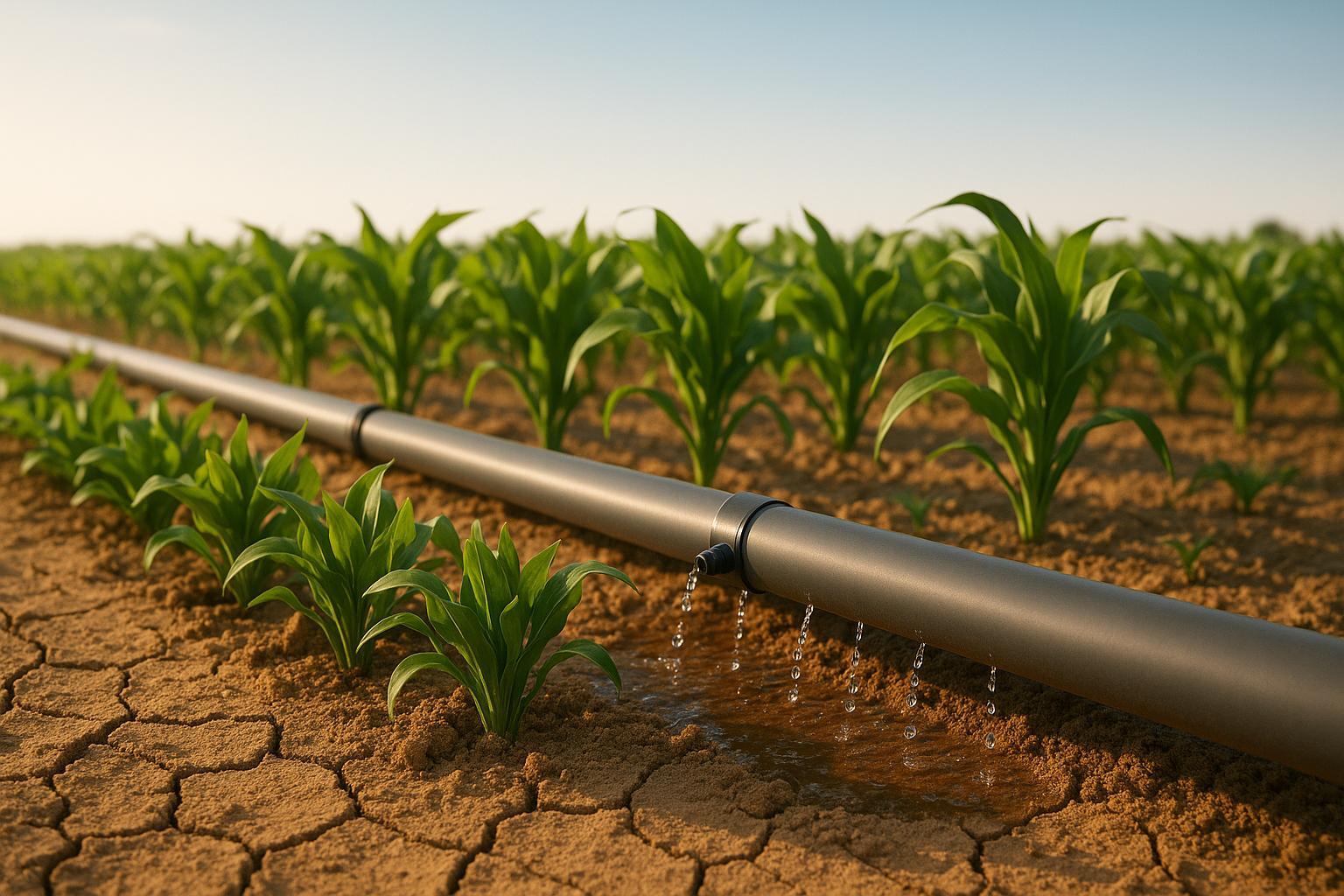
AI Tools for Drought-Resilient Irrigation
Explore how AI tools revolutionize irrigation, helping farmers conserve water and boost crop yields during droughts.

Reviving Drooping Tulips: Causes, Prevention, and Solutions
Learn about the causes of drooping tulips, prevention techniques, and solutions to revive your tulips in this comprehensive guide.
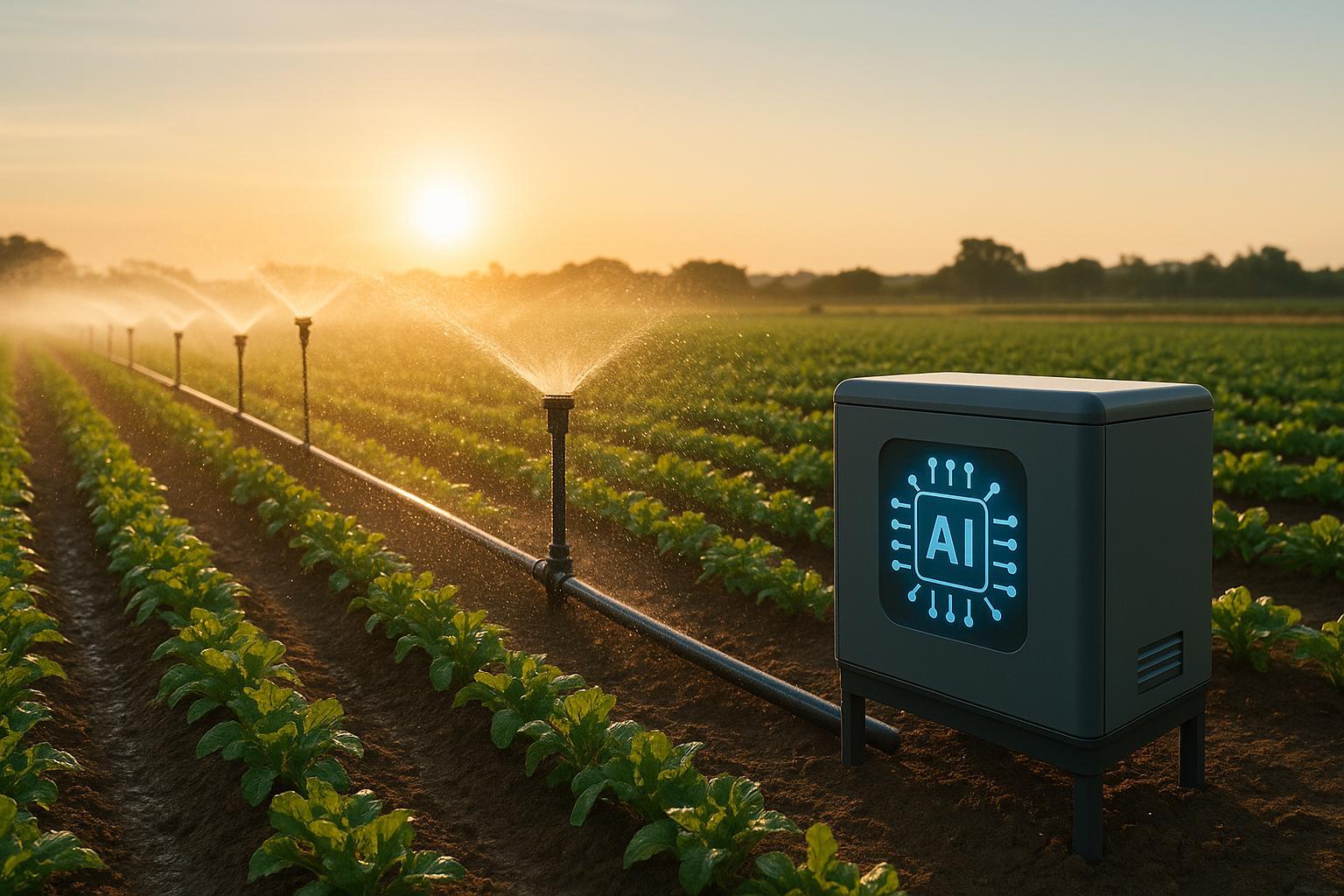
5 Common Irrigation Problems AI Solves
AI-powered irrigation systems tackle common issues like water waste and uneven distribution, promoting healthier plants and reducing costs.
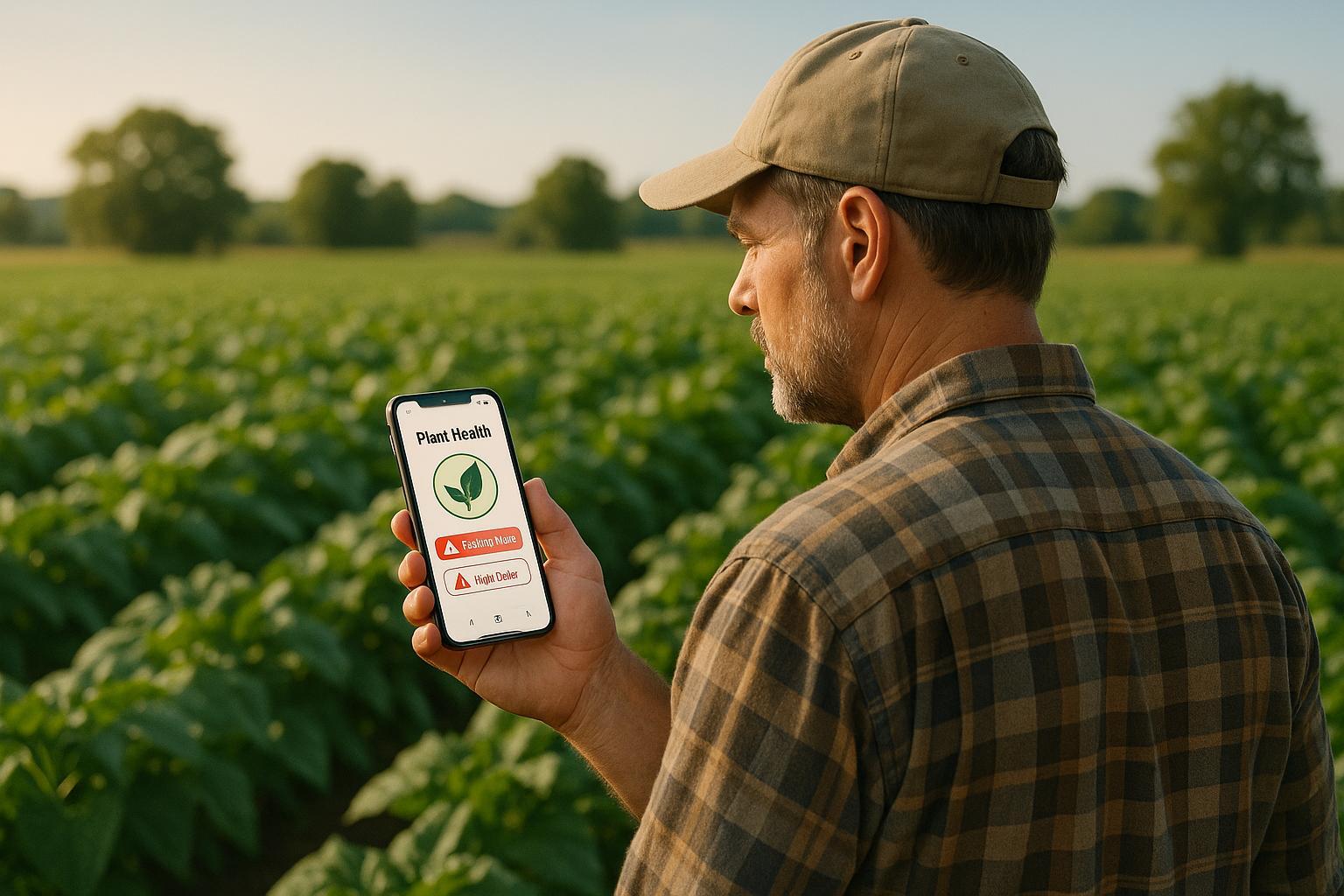
How Mobile Alerts Help Prevent Plant Disease Spread
Mobile alert systems revolutionize plant disease prevention by providing real-time monitoring and tailored alerts for gardeners and farmers.
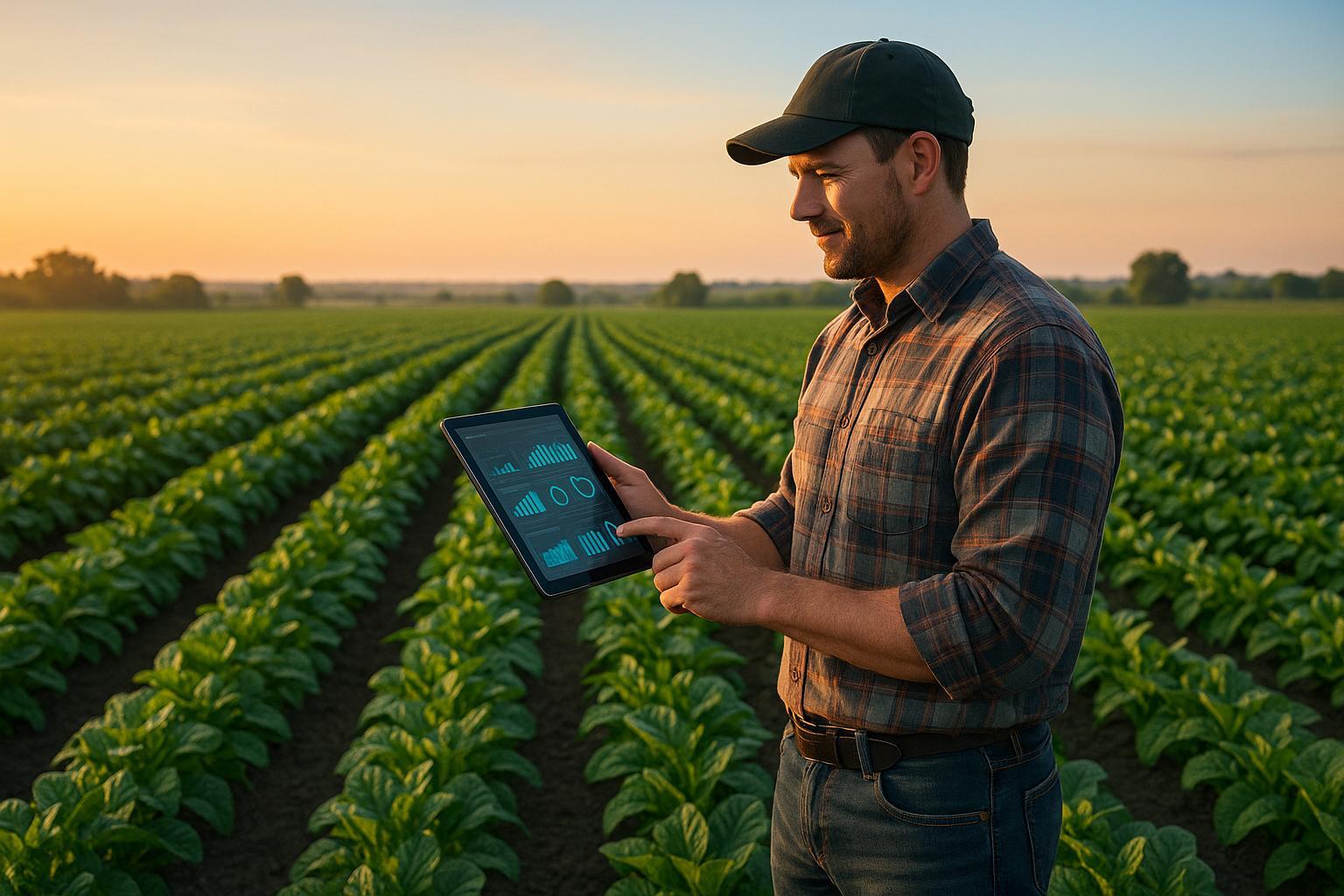
How Climate Data Improves Planting Decisions
Explore how climate data and AI are transforming planting decisions, enhancing crop management, and boosting productivity in gardening and agriculture.
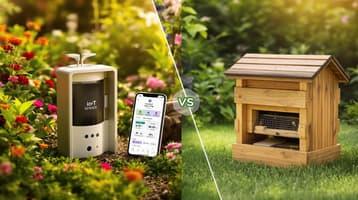
IoT vs. Traditional Pest Monitoring Systems
Explore the efficiency and accuracy of IoT pest monitoring systems compared to traditional methods, and discover which is best for your garden.